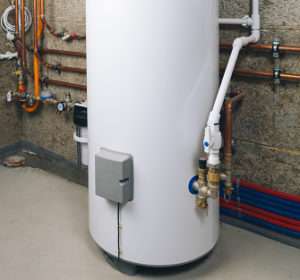This post may contain affiliate links which means I may receive a commission for purchases made through links.

In general, underfloor heating provides adequate warmth to be utilized as a single form of heating. However, its capabilities are influenced by factors like building insulation levels and the type of floor covering. All in all, underfloor heating uses pipes beneath the floor, heating your house from the floor up.
Although all underfloor systems are based on the same principle, they can be classified into various categories. So, if you’re planning to install an underfloor system in your home, it’s important to understand the different types available.
Fortunately, that’s exactly what this article is all about. Read on to learn more about what each type entails as well as its benefits and drawbacks.
Various types of Underfloor heating
1. Electric (Dry) Radiant heating
A dry or electric underfloor system consists of ultra-thin wires installed underneath the floor. The system is usually installed before the floor is laid in a new building. However, if you want to install the system in an older building, you have to raise the floor level of the existing building. Either way, the wires heat up when the system is turned, which then heats the floor surface.
There are 2 main types of electric underfloor heating systems available. That includes; thin wires that are embedded into a mesh mat and those that consist of loose wires laid underneath the floor surfaces. Both options can be installed onto existing substrates to heat the floor surface above.
One benefit of electric systems is that they tend to warm up quicker than their water-based counterparts. For that, they’re ideal for areas that require speed response time like bathrooms. In addition, they are easy to fit and feature thin wiring, thus raising the floor height by very few inches.
Still, on installation, electric systems are preferable if you are fitting the heating in 1 or 2 small rooms. This is because they’re easy, cheap, and quick to install. Therefore, dry underfloor heating is a smart option if you want to install the system in DIY projects or if you want to add a single room to an existing underfloor heating arrangement.
As a drawback, electric UFH systems lose heat faster compared to wet systems once you turn them off. At the same time, their running costs will likely be higher since electricity is more expensive per kWh compared to natural gas. This is why electric systems work well as independent solutions used in 1 or 2 small rooms.
Benefits
- Easy installation
- Suitable for use in any property
- Energy-efficient
- Compatible with all types of floor coverings
- Easy to operate
- Increases your home’s comfort and safety levels
Drawbacks
- High initial cost
- Floor height issues
2. Hydronic (wet) Radiant heating
A hydroponic setup consists of a series of pipes connected to a boiler that circulates warm water throughout your floor to heat a space. Better still, you can connect the system to other heat sources like pellet stoves and geothermal heating. The pipes are laid below the floor surface. As a result, when the system is turned on, warm water that is around 30 – 35 deg C is circulated through the series of pipes to heat the floor above as well as the entire room.
Most wet underfloor systems are divided into distinct zones. More notably, each zone is connected to a central system that monitors the warmth level in each area. Also, individual thermostats are used to regulate the temperature in each zone.
The pipes used in these systems are usually made of steel, polyethylene, or copper, embedded in a layer of sand & cement screen. However, they’re also used for wooden joists where sheet aluminum and foam plastic modules rest on the wooden joist or are laid on the subfloor.
That aside, wet UFH systems are usually recommended for new construction projects, where they’re the primary heat source throughout the house. Also, they’re preferable for heating an open-place space or large rooms and can be powered by a solar water-heating system.
Compared to electric systems, water-based UFH systems are more costly to install and have a slower warm-up time. Apart from that, they’re cheaper to operate in the long run and take longer to cool down, making them more cost-efficient in heating large areas.
Benefits
- Energy-efficient & Cost-efficient
- Can be combined with heat pumps for renewable heating
- Provides radiant heating that warms up the entire floor surface
- Ideal for heating large rooms
- Can be connected to various heat sources
Drawbacks
- Mostly used in new-builds only
- High initial installation costs
Hydronic Vs Electric Underfloor Heating-Which is the best UFH Option for you?
If you’re planning to install an underfloor heating system in your home, it’s good to weigh up the available options based on your needs. For instance, you’ve to consider whether you’re installing the system in your living room or bathroom. Also, you’ve to consider whether you need to run the system across the entire property or in more than 1 room.
Whichever the case, the differences between electric and hydronic systems are relatively minimal. However, if you want a more budget-friendly option, electric systems are a better choice than their warm water counterpart. On the other hand, hydronic UFH systems may include heat pumps, making them a more renewable option for your property.
All in all, after choosing the best system for your home, the next step will be to consider the type of floor that goes on top. This decision will be influenced by factors like comfort and cost.
Conclusion
To sum up, whether you choose an electric or a hydronic system, both options offer various benefits. Although underfloor heating is usually seen as a luxury, it’s more energy efficient than other types of space heating. Best of all, it will be a great way to heat your home throughout the year!
